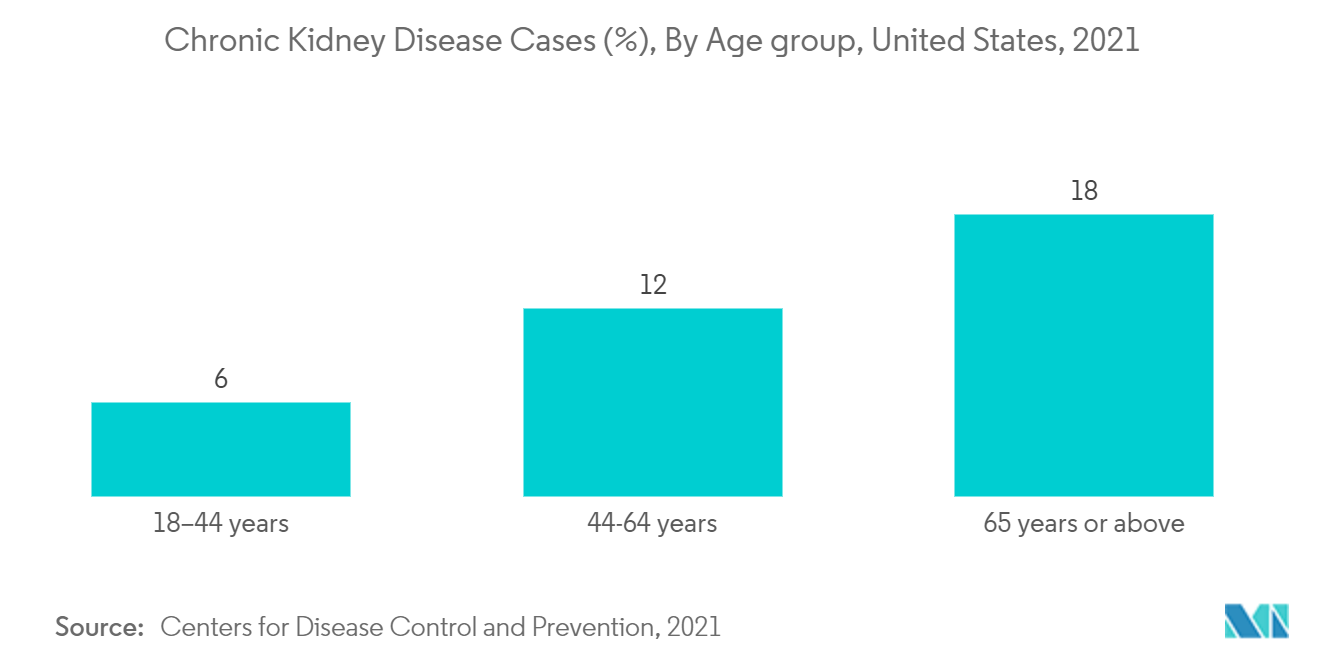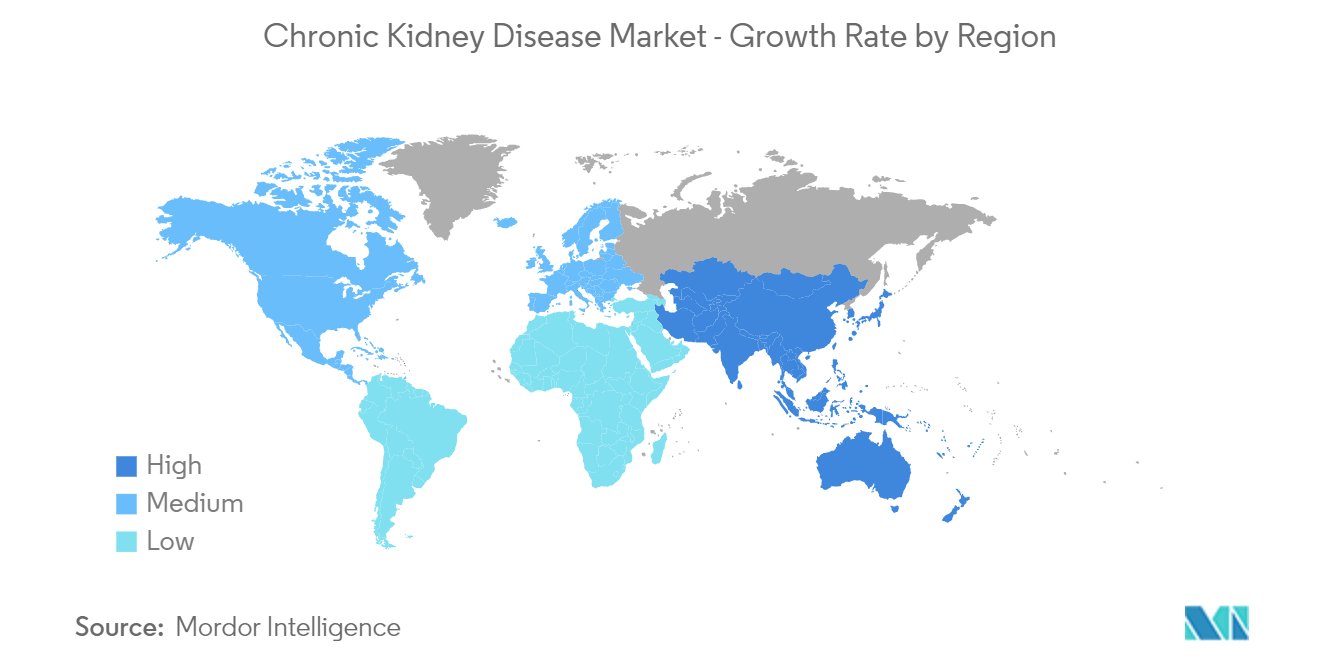Market Trends of Chronic Kidney Disease Industry
Blood Test Diagnosis Segment Expected to Witness High Growth over the Forecast Period
The blood tests segment is expected to witness significant growth in the chronic kidney disease market over the forecast period owing to factors such as the rising burden of chronic kidney disease and expanding technologically advanced diagnostic products.
Several types of blood tests help detect chronic kidney diseases, such as blood urea nitrogen (BUN) tests that measure the amount of urea nitrogen, a waste product, in the blood, serum creatinine test, and estimated glomerular filtration rate (eGFR) test. The demand for these tests is expected to increase due to rising awareness about kidney health.
In addition, the rising geriatric population, which is more prone to develop chronic kidney diseases, is also contributing to the demand for blood tests, boosting the segment's growth. For instance, as per 2022 statistics published by CDC, the prevalence of CKD is higher in people aged 65 years or older than in people aged between 45-64 years or 18-44 years. Also, according to the 2022 statistics published by UNPF, about 24% and 19% of people in Italy and Canada are aged 65 years or above, respectively. This is anticipated to increase the risk of these populations developing CKD hence augmenting the segment growth.
Furthermore, the rising government initiative for spreading awareness regarding CKD and early diagnosis is also contributing to the market growth. For instance, the CDC Chronic Kidney Disease (CKD) Initiative focuses on a comprehensive public health strategy, involving other public health agencies and national organizations, to address CKD. This program supports activities such as disease surveillance, assists in increasing knowledge of CKD and its complications, encourages early detection and treatment, and enhances the quality of life for those who have CKD. Similarly, the Kidney Failure Probability Equation (KFRE) is a simple and extensively used method for predicting the risk of kidney failure among patients with CKD.

North America Expected to Hold Largest Market Share over the Forecast Period
North America is expected to witness a significant market share in the chronic kidney diseases market over the forecast period. The major factors driving the market growth are the rising prevalence of chronic kidney diseases, the presence of well-established healthcare infrastructure along with high health spending, and technologically advanced diagnostic tests.
The increasing burden of chronic kidney diseases among the population is the key factor driving the market growth. for instance, as per the report published by American Kidney Fund in February 2022, an estimated 37 million Americans have kidney disease, and 92,000 Americans are on the kidney transplant waiting list (as of February 2022). In addition, per the 2022 statistics published by the American Cancer Society, about 79,000 new cases of kidney cancer (50,290 in men and 28,710 in women) are expected to be diagnosed in the United States in 2022. As per the same source, the lifetime risk of developing kidney cancer is higher in men (2.02%) than in women (1.03%). This is anticipated to fuel the market growth over the forecast period.
With the presence of well-established healthcare infrastructure and high healthcare spending in the region, the studied market is expected to grow over the forecast period. According to the OECD, in June 2022, United States healthcare spending in 2021 was 17.8% of the total GDP of the country. In addition, as per the CMS, the NHE is projected to grow at an average of 5.1% over 2021-2030 and to reach USD 6.8 trillion by 2030. As national health expenditure is projected to grow 1.1% points faster than gross domestic product per year on average over 2021-2030 the health share of the economy is projected to rise by 19.6% in 2030.
Furthermore, the rising company focus on adopting various business strategies such as collaborations, acquisitions, partnerships, product launches, and approvals is also contributing to the market growth. For instance, in April 2021, the USFDA approved Farxiga (dapagliflozin) oral tablets to reduce the risk of kidney function decline, kidney failure, cardiovascular death, and hospitalization for heart failure in adults with chronic kidney disease who are at risk of disease progression.


